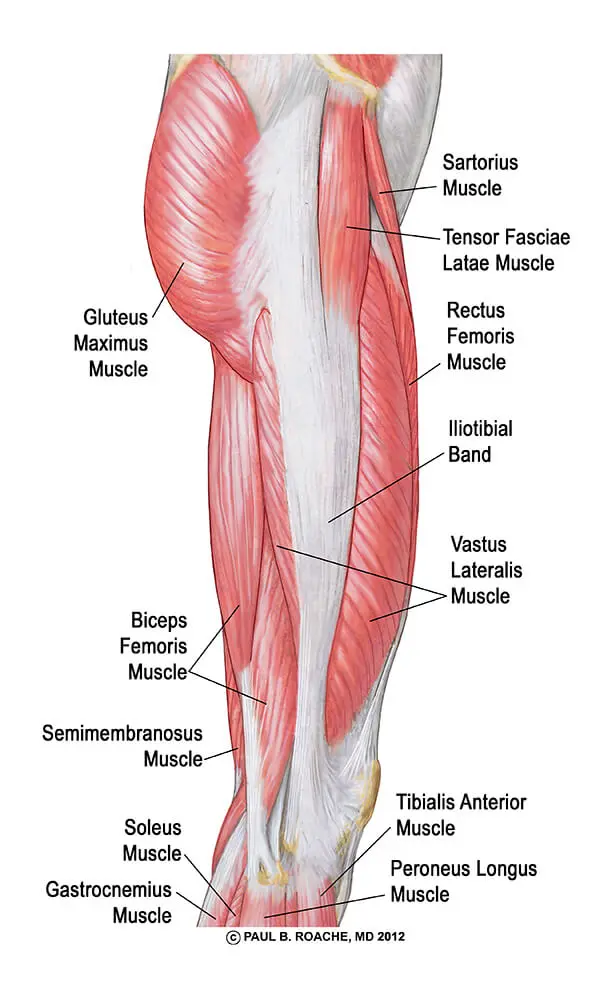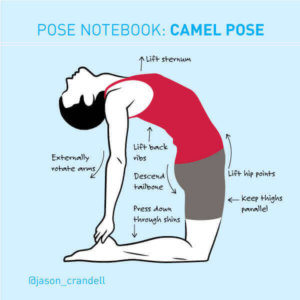For more than a decade, I’ve quivered at the thought of attending a hip-opening workshop. Having played ice hockey and been a skateboarder for more 15 years, my hips were molten lead that no amount of Pigeon Pose could crack open. Now, 20 years in, I’ve chipped away and breathed steadily enough to be halfway comfortable and mobile in these joints.
As I step back and look at the challenges my hips presented, I finally realize that the issue wasn’t just hockey and skateboarding. Part of the problem was that I didn’t understand the joints or muscles that I was working with. I didn’t have a “map” of the region to make sure that I was stretching and strengthening all the muscles involved in the hip joint. I was overly focused on my outer hips and hamstrings, while ignoring my hip flexors and adductors. I didn’t understand the nature of the hip socket and that truly “opening” the hips requires a more intelligent, comprehensive approach.
I’m creating this guide because I know it would have helped me practice and teach more effectively years ago. This is the approach that I stick to when I’m working with my students and trainees—and, when I teach anatomy live and online. I’m hopeful that it will give you a simple framework for understanding your hip muscles.
Make sure to check out my Illustrated Guide to Yoga and Your Hips, Part 1. It describes the structure and ligaments of the joint and will help you understand the hip joint more clearly. Part III provides you with a balanced sequence for strengthening and opening your hips.
And, remember, understanding the joint structure and muscles of your hip will make you a better sequencer! When you’re aware of all the muscles that comprise your hip, you can make sure that your sequences target all of the muscular compartments instead of focusing too heavily on the outer-hips and hamstrings like I did for so many years!
Understanding Hip Anatomy Muscles for Yoga
The Five Muscular Compartments of Your Hip
Quick caveat: I’m going to describe the muscular compartments of your hip as though they are each separate and solitary. I’m doing this because it provides us with a simple, foundational “map” of the hip muscles and their functions. In reality, there’s a lot of crossover between the muscular compartments. The compartments often help each other out and work together. For example, the adductors–especially the adductor magnus–assists the hip-flexors. Similarly, your external rotators often work with your abductors to adduct your hip. So, as you learn these compartments, keep your understanding basic and simple. But, remember that these muscle groups are often helping each other out.
Hip Flexors: Your hip flexors in include the psoas, illiacus, and rectus femoris. These muscles connect the front of your pelvis to the front of your thigh (the psoas also connects to your spine). In simple terms, these muscles rotate the front of your pelvis and the front of your thighs toward each other. They are actively contracted in forward bends and core-focused work. The hip-flexors are often the most limiting factor in yoga backbends. If your hip-flexors or tight, they will inhibit your pelvis from rotating backward over the femurs. This often requires the lower back to extend too much and become overly compressed.
Adductors: Your five adductors run from your pelvis (pubic rami) down the inside of your leg. Only one of them, your gracilis, crosses your knee. In yoga, these muscles limit postures that require your thighs to separate widely such as Baddha Konasana and Upavistha Konasana. All of the wide-legged standing postures like Warrior II, Triangle Pose, and Side Angle Pose do a good job of creating range of motion in this group. The adductors are strengthened in core-focused work.
Hamstrings: Yes, your hamstrings are hip muscles! Your hamstrings attach to the back of your pelvis (ischial tuberosity) and run down the back of your leg. Their job is to extend your hip and flex your knee. It’s obvious that hamstring restriction limits forward bends because it keeps your pelvis from rotating forward in these postures. What’s less obvious is the role that these muscles play in backbends. Contracting your hamstrings in backbends helps rotate your pelvis backward over your thighs. This allows your spine to move more deeply—and more comfortably—into backbends.
External Rotators: Beneath your gluteus maximus, your six external rotators run from your pelvis to your thigh bone. The most familiar name in this group is the piriformis. As the name implies, these muscles primarily rotate the thigh bone laterally. The external rotators are the main muscles that most students feel when they do Pigeon Pose, Cross-Legged Forward Bend, and Ankle-to-Knee Pose. Restriction in your external rotators makes it difficult to sit cross-legged and can reduce your ability to do forward bends and seated twists. Strengthening this muscle group can help keep your sacroilliac region stable and maintain optimal alignment in this joint.
Abductors: Your abductors include your entire gluteal family (maximus, medius, & minimus), tensor fasciae latae and sartorius. These muscles run from the outside of your pelvis to the outside of your thighbone. When they contract, they either stabilize your pelvis, or pull your thighbone out to the side. Although they derive their name, “abductors,” from the latter (to take away), they’re usually working to keep your pelvis stable while you stand and walk. Outer hip openers like Pigeon and Gomukhasana stretch this muscle group. Standing postures—especially the top leg in Ardha Chandrasana—strengthen this group.
Hip Flexors: Psoas, and Iliacus
This drawing illustrates the pathway of your psoas. Ignore the fact that “major” and “minor” are both listed. These muscles contract strongly in postures like navasana and bakasana. They stretch in all of your backbends and lunges.

Hip Flexors: Your Rectus Femoris
The rectus femoris is a “double-duty” muscle. It works with the other quadriceps (technically, it is considered one of the four quads) to straighten the knee. And, it works with the other hip flexors to flex the hip. Like the psoas and iliacus, the rectus femoris strongly contracts in most core strengthening postures and lengthens in all backbends.

Your Adductors
I included this illustration in my Illustrated Guide to Yoga and Your Core due to the adductors relationship to the core. Check it out here if you haven’t read it. This 3-D cutaway shows the adductors running between your hamstrings on the back and your quads in the front. You contract your adductors in core-strengthening work and you stretch them in all the postures where you separate your thighbones such as Bound Angle Pose, Malasana, and most standing postures.

Your Hamstrings
Your hamstrings include the semimembranosus, semitendinosus, and biceps femoris. You strengthen your hamstrings in backbends, especially prone backbends like Locust and Bow. You stretch your hamstrings in countless postures, including all standing forward bends and all straight-leg seated forward bends.

Your External Rotators and Gluteus Maximus
This is my favorite illustration in this series. The left side shows the gluteus maximus. On the right side, the gluteus maximus is removed from the illustration revealing the external rotators that live underneath the gluteus maximus. You can see how layered and dense this region is. You strengthen your external rotators by engaging them in standing postures and backbends. You also strengthen them in some of the transitions between postures in vinaysa yoga. You stretch these muscle groups in all Pigeon Pose variations and cross-legged forward bend variations.

Your Abductors
You can see your glutes, tensor fasciae latae, and sartorius in this illustration. In yoga, we have to make a concerted effort to strengthen these muscles since they don’t automatically engage in most postures except for standing balances. In Part III of this series, I’ll provide you with some cues that will help you work these muscles. You stretch these muscles in all outer-hip openers, like Gomukhasana and Pigeon.

Thanks again for checking out this series!




